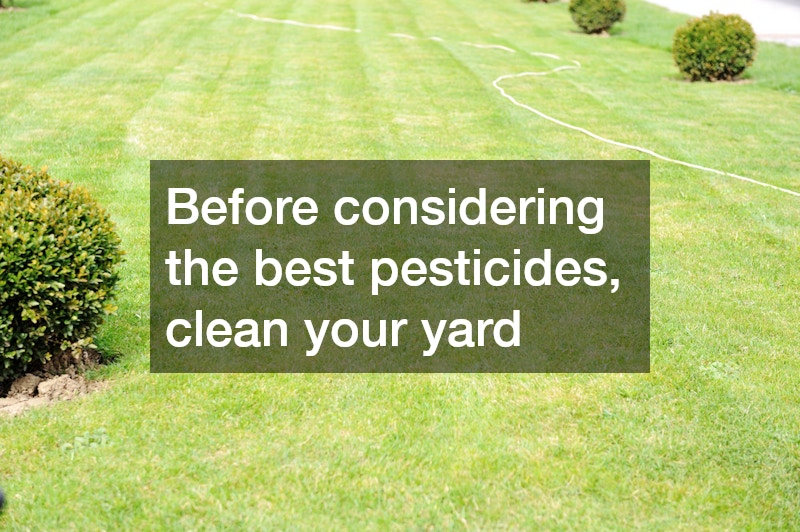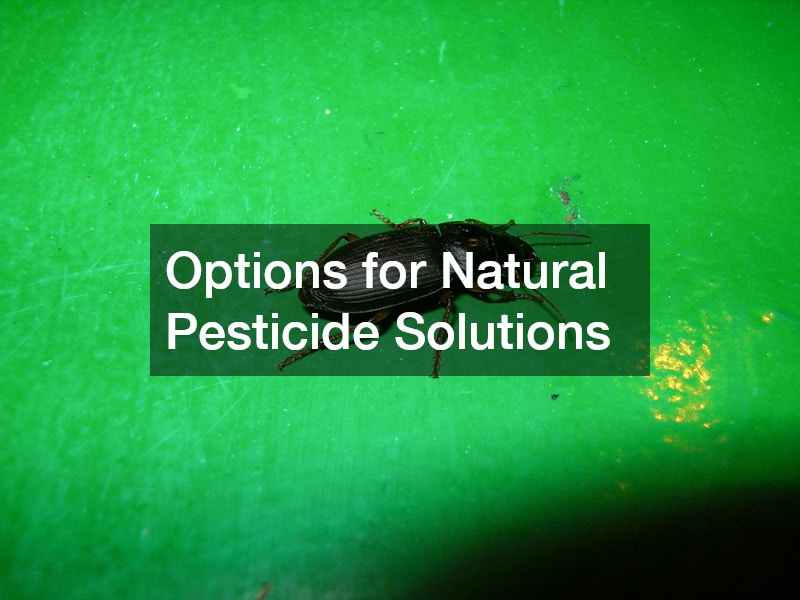
When you have pests, you don’t just want them controlled; you want them dead, quickly. Before you hire a local pest control service, you may want to try a few natural remedies before resorting to a chemical outdoor pesticide. Some pest control services use natural lawn insect repellent, but that won’t kill the pests causing damage, and in the cases of severe infestations, it may not address the problem.
How do you find the best pesticide for plants so you don’t damage your garden, but do eradicate the problem? In some cases, trial and error work, but read this guide if you want to pinpoint the issue and take it out immediately.

Before considering the best pesticides, clean your yard, shed, and garage. Remove all waste and litter to the landfill. Relocate any wood pile to the furthest corner of the yard to distance it from the house, shed, and garage.
Options for Natural Pesticide Solutions

The natural options might surprise you since some include common household liquids; for example, a mixture of vegetable oil and mild soap works to repel mites, aphids, and thrips, according to Tree Hugger. Castile soap and water can effectively deter beetles, spider mites, scale crawlers, aphids, whiteflies, and mealybugs. Neem oil won’t hurt pets but chases away most insects. Spreading diatomaceous earth ensures that any bug that crawls on it loses its exoskeleton due to the abrasive qualities of the soil.

There’s nothing quite like the sight of a well-manicured lawn. However, many homeowners struggle to keep their lawn healthy and employ pesticides or other chemicals to enhance its appearance. Indeed, almost 70 million pounds of pesticides are put on lawns in the United States annually — that’s ten times the amount that our farmland receives, if you compare acre to acre. Unfortunately, all those pesticides and chemicals can take a serious negative toll on the environment — for example, between 60-70 million birds are killed due to pesticide poisoning every year in just the United States. Turning to organic lawn care whenever possible is highly preferable and as homeowners become more aware, environmentally responsible lawn care is becoming easier to source.
What Do I Do Need to Know About My Lawn?
Grass plants are comprised of between 75-80% water and a dense and a healthy lawn will help prevent run-off. This means that a good and healthy law can absorb rainfall six times better than a wheat field and four times better than a hay field. If you don’t close crop your grass, you could actually benefit your grass’s health — leaving it between two and a half to three and a half inches in height can help keep your lawn healthy. You may also want to check the health of your soil if your grass isn’t doing too well. A soil test can tell you the soil’s pH level and whether or not you need extra nutrients applied to the ground. The optimal pH for grasses tends to be between 6.5 and 7.0 — fairly neutral.
Turfgrass is a huge market in the United States — around 30 and 40 million acres of land are made up of turfgrass and it can boost your home’s property value by anywhere from 15-20%. Another added benefit of turfgrass is its assistance with pollution control — it can trap as much as 12 million tons of dust and dirt that would otherwise go into the atmosphere.
What Are the Dangers of Using Pesticides or Other Chemicals On My Lawn?
Pesticides are proven to have a detrimental effect on wildlife and the natural environment where they’re used. They may keep your lawn looking great, but can kill other important contributors to the delicate environmental balance. According to the Virginia Cooperative Extension’s publication, ?Nutrient Management for Lawn Service Companies,? some fungicides and pesticides can have a devastating impact on earthworms. Between 60-90% of the earthworm population can be decimated where the pesticide or fungicide is applied.
If you’re using fertilizer, between 40-60% of the nitrogen contained in fertilizer will end up as run off or get leached away into groundwater or surface water — this includes getting into wells and drinking water. This can be harmful to humans who rely on this water for drinking and cooking, especially if they don’t filter their water.
What Are My Options If I Don’t Use Pesticides?
Seek out plants that are disease-resistant and well-adapted varieties and try to not over or under water your plants, as those can make them more vulnerable to diseases or pests. Changing the location of your annual plants can also keep pests from cropping up in the same area every year. Having a good number of different plants can also help cultivate the good kind of insects that will keep bad insects or diseases at bay.
Weeding by hand and removing pests that you see as you go are also good methods. If your plants are sturdy enough to withstand the pressure of a hose, the stream of water can dislodge or drown bugs. If you feel that you must resort to chemicals, there are also organic pesticides available which are less harmful to the good kind of insects and can break down quicker than synthetic pesticides.
Keeping your lawn lush and healthy can be achieved in an environmentally friendly way that won’t impact your neighbors or the earth around you. With a little research and responsibly sourced materials, you can have the best of both worlds.